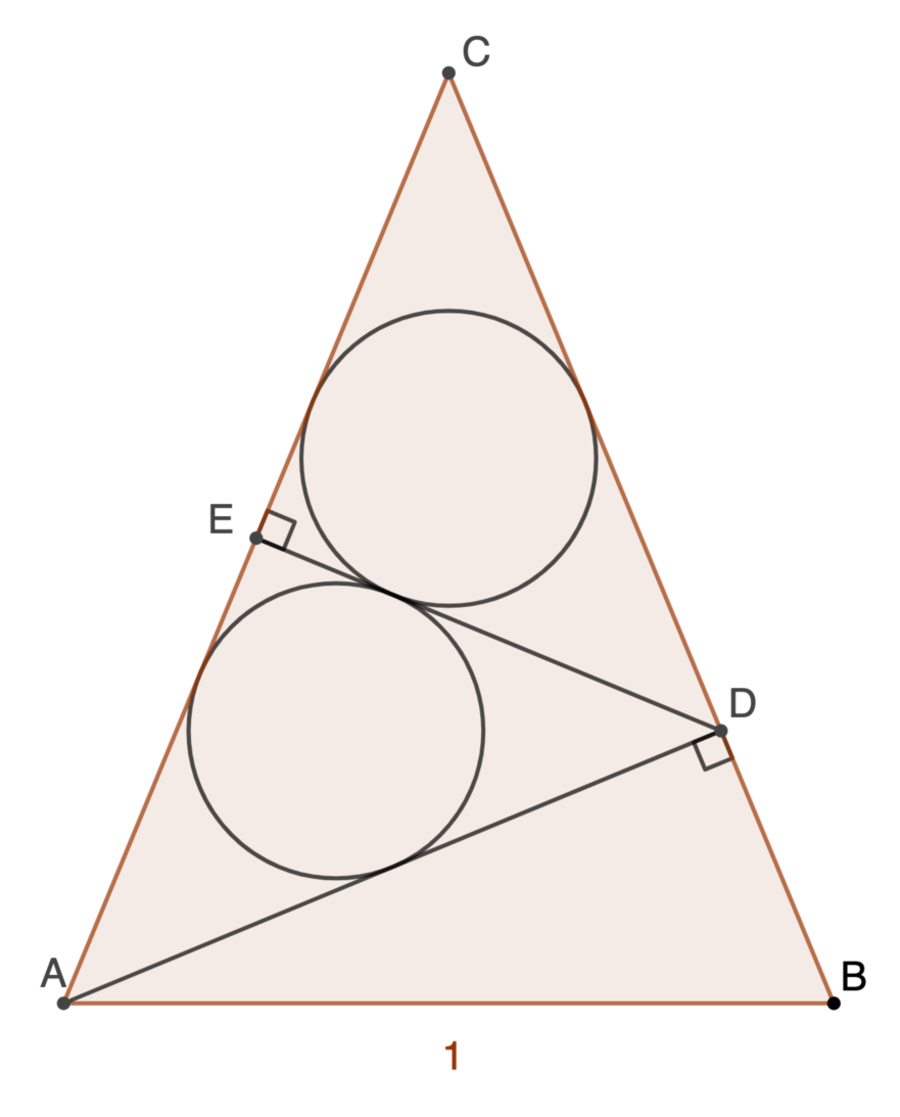Isosceles Twins, part 1

is an isosceles triangle with a base length of 1. and . is chosen so that the two incircles are congruent. If their radius, , submit .
The answer is 6.
This section requires Javascript.
You are seeing this because something didn't load right. We suggest you, (a) try
refreshing the page, (b) enabling javascript if it is disabled on your browser and,
finally, (c)
loading the
non-javascript version of this page
. We're sorry about the hassle.
Since ∠ A E D = ∠ D E C = 9 0 ° , E D = E D , and the incircles of △ A E D and △ D E C are congruent, then △ A E D ≅ △ D E C .
Since △ A E D ≅ △ D E C , ∠ E D A = ∠ E D C , and since ∠ A D C = 9 0 ° , ∠ E D A = ∠ E D C = 4 5 ° , so △ A E D and △ D E C are isosceles right triangles, and ∠ E A D = ∠ E C D = 4 5 ° .
The base angles of isosceles △ A B C are then ∠ C A B = ∠ C B A = 2 1 ( 1 8 0 ° − 4 5 ° ) = 6 7 . 5 ° , so ∠ D A B = ∠ C A B − ∠ E A D = 6 7 . 5 ° − 4 5 ° = 2 2 . 5 ° .
That makes A D = A B cos 2 2 . 5 ° = 2 2 + 2 , and A E = E D = 2 1 A D = 2 2 2 + 2 .
Therefore, the inradius r = 2 1 ( A E + E D − A D ) = 2 1 ( 2 2 2 + 2 + 2 2 2 + 2 − 2 2 + 2 ) = 4 2 − 2 , so a = 2 , b = 4 , and a + b = 6 .